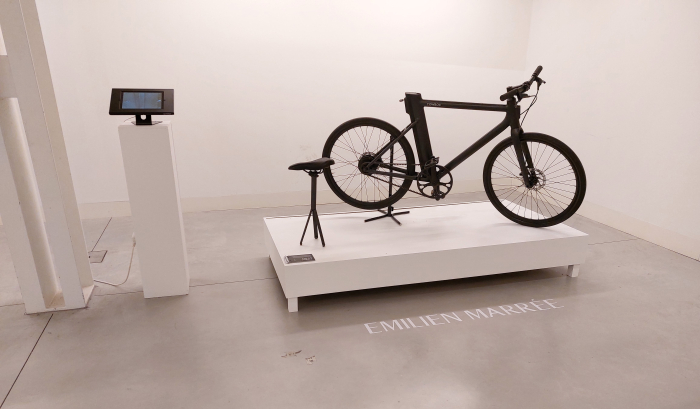Pressures of time meant we sadly couldn't make any of the Belgian design school graduate shows this past summer; however, the platform MAD Brussels did manage to have a look.
Or did at least look at those design schools to be found in Brussels, and selected from the innumerable graduation projects on show their top ten. An honoured decemvirate subsequently presented in the showcase Graduation Show 2022 at the MAD HQ.
A subjective selection, sure, but then aren't all selections?
Including our favourites from MAD Brussels' favourites.......
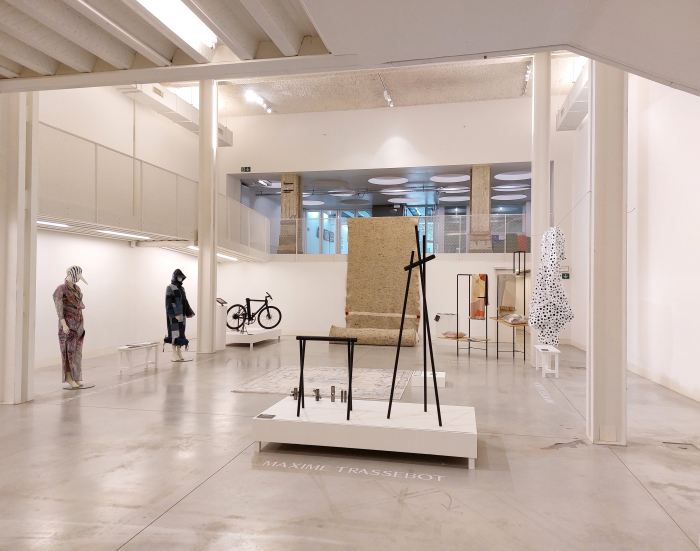
Established in 2010 by the City of Brussels and Brussels Capital Region, MAD Brussels or MAD, Home of Creators to give them their formal corporate identity signature, is a platform for supporting, promoting and advancing creatives of all hues in the wider Brussels region; a supporting, promoting, advancing undertaken via, and amongst other initiatives, a Creative in Residence programme which offers space and mentoring to the selected recipients, through providing help and advice to creatives establishing their business and also through the staging of exhibitions, both externally and also in their Brussels HQ.
Exhibitions such as Graduation Show 2022.
An exhibition that has now ended, we only just made it to Belgium in time; however, images of all ten selected projects, and links to the respective creatives, can be found at https://mad.brussels
What follows is our four, subjective, highlights.......
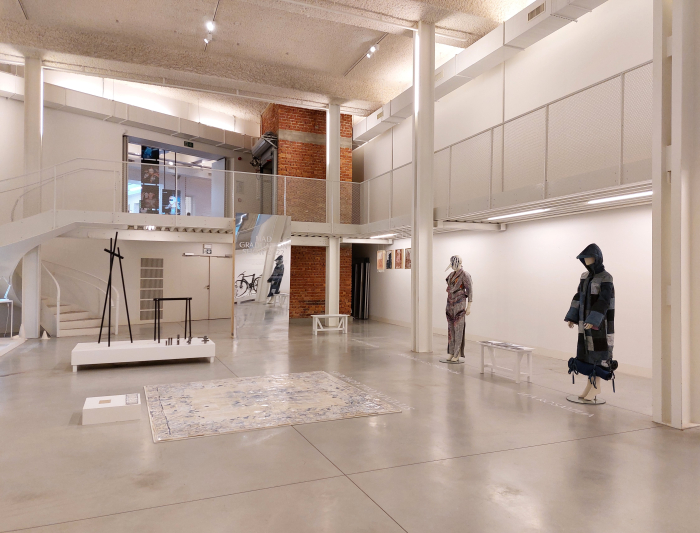
Projects involving approaches to reusing, recycling, rescuing waste textiles are nothing new, certainly not in terms of student projects where they are recurring theme; however, the number of possible approaches to what will be an ongoing problem no matter how much we reduce our consumption and repair that which we consume, means that there is a near limitless number of such projects. And in many regards the more the merrier; as even those that fall by the wayside can still meaningfully contribute to a very necessary discourse. Thus one should never tire of student textile recycling and reuse projects.
For her graduation project at the Académie royale des Beaux-Arts de Bruxelles – École supérieure des Arts de la Ville de Bruxelles, ARBA-ESA, Louise Richard developed a process for combing locally sourced jumpers too badly damaged to be reused or repaired with local virgin wool to create the MultiFelt of the project's title, a MultiFelt which can subsequently be used for all those situations when one employs felt. Decorative felt
Amongst the numerous aspects contained in the project that caught our attention we particularly liked the use of local wool, which is what all wool used to be, or at least regional, not a global product of global industry. And wool which, in many regards, once came as by-product from local, regional, sheep who primarily served to satisfy a whole host of other environmental, nutritional and economic purposes. And whose return, and the associated return of more small scale, local farming, we'd argue, would be something very much to be welcomed.
No. We're not getting all Art Nouveau on you and demanding a return to perceived simpler times. That ain't possible. Nor did those simpler times exist; but, in developing a novel material, more technically a novel process for producing an existing material, and as we all know an important part of design is developing processes not products, Louise not only allows for a meaningful use of unsavable pullis, a resource that isn't going to vanish any time soon, but also opens a market for local wool and thereby encourages small, local level, sheep-holding and thus a perspective for smallholders on the edges of cities. And thus enables a strengthening of local economies on the edges of cities, which is good for both those communities and the cities. Or put another way, MultiFelt is also a very nice illustration of an argument that says any future oriented strategy out of our current environmental and ecological malaises needs to be based on lo-cost, lo-tech, local production, something we're much better placed to exploit today than we were two or three generations ago. Or 100 years ago. What we need however are appropriate and meaningful novel materials and processes
And thus as a project MultiFelt is also a nice reminder that textile design isn't (just) about creating pretty artistic patterns.
Further details on Louise Richard and MultiFelt - Histoire de pulls can be found at https://louiserichard.net
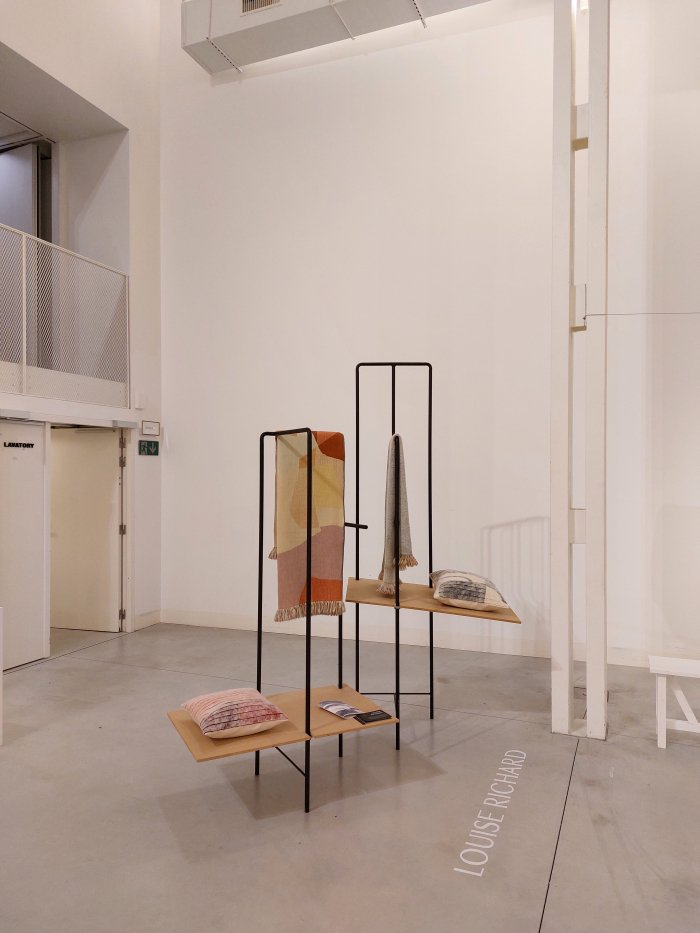
Straight up: when were viewing Connect, Maxime Trassebot's graduation project at ENSAV LaCambre, we didn't know anything about Maxime. And the decision to include Connect in this list was made, as with all the other decisions, while we were in the MAD HQ. Only once we were back in the smow Blog office and typing up this post, did we realise Maxime works at Ateliers J&J: an operation who, as older reader will be well aware, enjoy an almost scared status in these dispatches. Are one of our all time favourite platforms. But who we genuinely didn't know Maxime was associated with when viewing Connect. There is no favouritism or bias at work here, Connect won us over on its own merits and arguments. And, no, we didn't need to mention the connection, sorry, Ateliers J&J, to but in the interest of transparency felt we should.......
....but enough.... to Connect
A few years ago you couldn't move at furniture fairs for clothing storage, hanging, products constructed from interlocking wooden stabs, products inspired and informed by a myriad vernacular systems. And invariably associated with the nomadicity that self-appointed t**** researchers sold to all who listened. Connect is, in many regards, also inspired by those vernacular interlocking wooden stabs, but re-imagined as Belgian interlocking metal stabs; a re-imaging that not only bequeaths the system its own aesthetic, but also expands the possibilities of the system.
And, importantly, it is a system. Not a product. A system based around a series of joining mechanisms laser cut into the tubes and which, according to Maxime, we unfortunately weren't allowed to try for ourselves, but which according to Maxime, allow for the simple assembly, disassembly and reassembly of stable, durable objects and that, again importantly, without the need for screws or tools or skills of any sort.
And while we admittedly aren't fully aware of the current scope of the Connect system, and are still querying if there isn't a little more refinement that could be undertake in the joining mechanism to marginally optimise the process, and reduce the number of components, as a system it is one that we can well imagine functioning supremely in a wide variety of contexts. And a system which if Jean J&J has any sense, and we believe he does, he'll have signed up by now.......
Further details on Maxime Trassebot can be found at https://linkedin.com/maximetrassebot and at www.instagram.com/maxime.trsbt
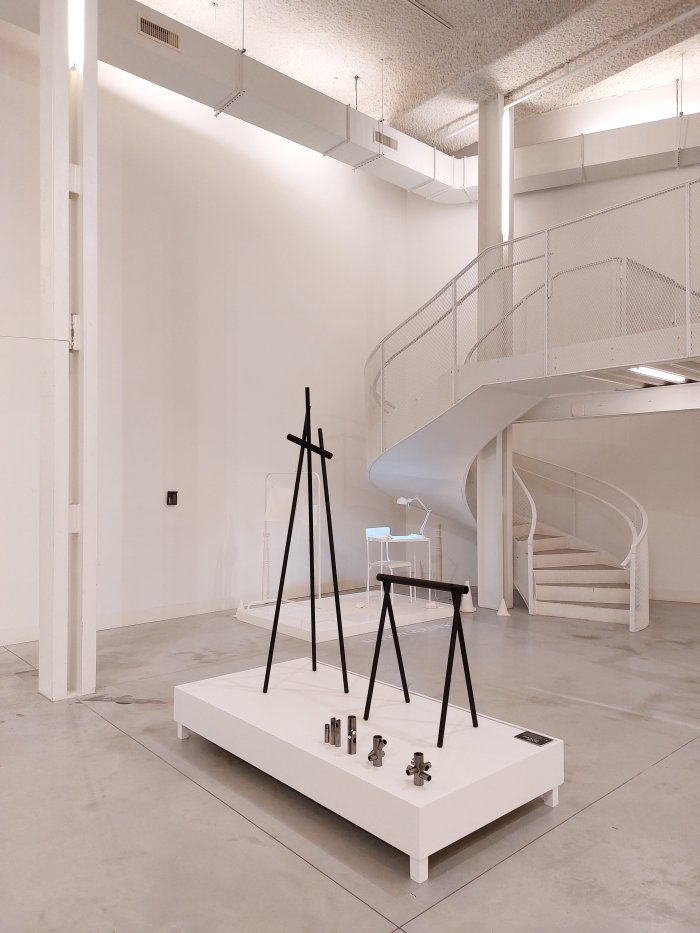
Yes, that is the sound of us praising a clothing design project. Something, no, we don't do on a regular basis, primarily because clothing design projects, be they by students or established professionals, have a tendency to either be self-indulgent or lacking in a relevance beyond making a statement, or over-conceptualised to the point of being unreadable. And thus tend to be more art than design. Which is fine, isn't a complaint, but also isn't our primary focus. Isn't going to rock our boat.
Heal by Saint-Luc Bruxelles graduate Blandine Kosongonda is very much design. And has one aspect with which we were particularly taken. An aspect regular readers may well have already identified ... Modularity.
Blandine Kosongonda didn't invent modular clothing, it is a thing. If a small thing. But a thing that Heal argues should be much bigger. An argument Heal signed us up to.
For after decades of being told to combine this top with those trousers, to combine those shoes with that hat, or to combine that jacket with that lover, is the path towards a more responsible relationship with our clothes not to buy components we add together as and when required, rather than buying unresponsive, finished, objects? A quilted gilet, for example, for which you can not only by arms of various materials, thicknesses etc but also additional layers, and larger pockets, and thereby have a single garment for all seasons and occasions. Or a spring top that becomes an autumn top. A summer cap that becomes a winter cap. Yes walking trousers that become shorts, an object whose popular reception is, we'd argue, part of the problem of accepting clothing modularity.
Modular construction makes sense because needs are often the same but realities different: modular furniture make sense because our needs are the same but our spaces, our lifestyles, our characters are different. Modular clothing makes sense because our needs are the same but the seasons, our lifestyles, our characters are different. And increased modularity, in all spheres, can result in decreased production and consumption without any loss of joy and satisfaction and interaction and individuality.
And while modularity wasn't at the core of Heal, as a project it was primarily concerned with salvaging damaged clothing from landfills, and thus, again, considerations on reusing, recycling, rescuing textiles, considerations which resulted in relatively conceptual realisation, one with loads of zips that both harked back to the attitude of punk and also symbolised the healing of the salvaged items reflected in the title; the modularity inherent in Blandine's approach and position was for us very much the highlight and the key take home. And a clothing modularity whose neat arguing in favour of we are thankful for. And to which we are sure we will return.
Further details on Blandine Kosongonda can be found at www.instagram.com/blandine.kosongonda
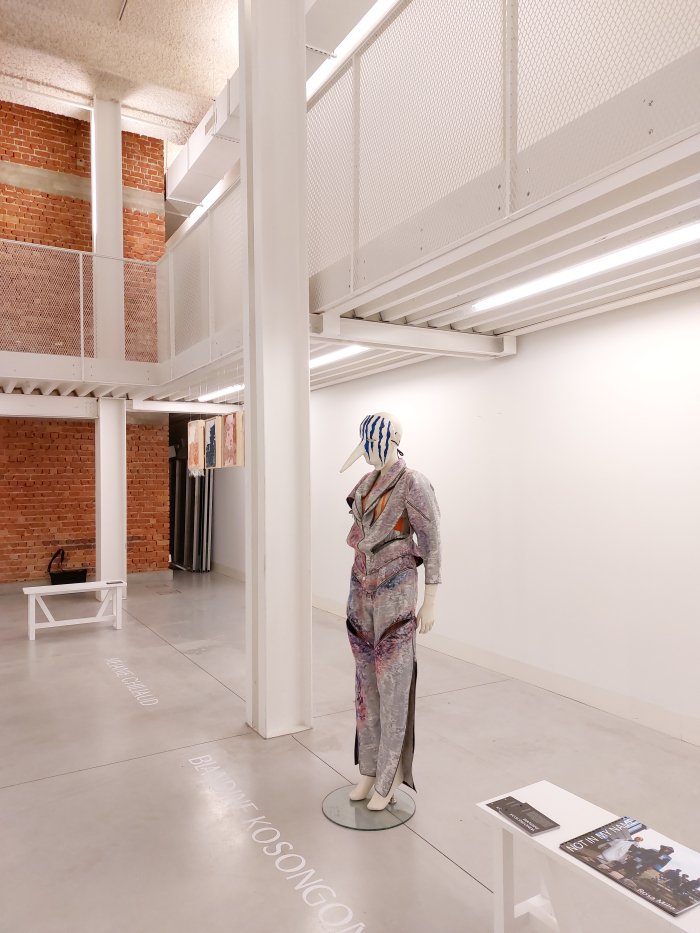
One of the joys of viewing and consuming development stage design projects is the regularity with which one meets projects so stupidly simple it is hard to conceive than anyone could have developed them. While being faced with the proof that someone did.
Tripod by CAD - College of Art and Design Brussels graduate Emilien Marée is one such simple impossibility.
In essence it is a bicycle saddle that can removed and used as a low stool, and thus a seating solution for all on long distance bike tours or simply for meeting friends in the park of an evening. Yes, you can sit on the ground; but that ground may be wet, may be cold, may become wet and/or cold. Or may be stony. Or concrete. And certainly won't be as comfortable over time as sitting on a low stool. Nor as practical when cooking, fishing, using a laptop, playing a flute, fixing a puncture, sharing coffee and cake, whatever.....
And while, admittedly, we are unsure as to how stable and durable Tripod is, if it is actually a viable solution; a stable, durable, viable solution we very much hope it is: as a proposition Tripod is not only a very nice reminder that there isn't anything that can't be re-imagined and re-worked, the question is much more if one should, which in this case we'd answer with a resounding, yes!!! But is also very nice response to Stella by Achille & Pier Giacomo Castiglioni which turned a bike saddle into a stool as a Postmodern readymade bricolage: Emilien applies a functionalist perspective, a Post-postmodern perspective to a Postmodern proposition, and re-sets the Castiglioni's saddle in its original context. Just much better, much more functional, than it previously was. Or anyone thought possible. Could have begun to think possible. And that with an astonishing simplicity.
Further details on Emilien Marée can be found at www.instagram.com/emilien_maree and for all Francophones there is a brief chat with Emilien from 2020 on BXFM 104.3 Bruxelles - The sound of Europe, which is a big boast, and one we hope BXFM 104.3 Bruxelles can live up to.... https://soundcloud.com/uptown-design-tour-emilien-maree
